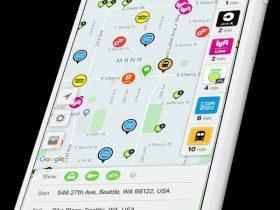by Michelle Goldsmith
Across Australia and around the globe, Intelligent Transport Systems (ITS) are already making road travel safer, more efficient and more sustainable. Such systems are only becoming more and more relevant as population grows and the number of vehicles on the roads increases, with various ITS technologies offering solutions to decrease congestion, increase efficiency and mobility, and even save lives.
Fundamentally, ITS involves integrating information and communication technologies into transport systems to optimize operations. ITS encompass a broad range of systems and technologies, with varying levels of complexity and automation.
While smart systems can be applied to any form of transport, the term ITS is most frequently used in reference to road transport. The ‘currency’ of any ITS is its data, which is used to improve the transport system’s operations, often in real time.
As such, ITS employs a variety of wired or wireless technologies to collect, transmit, communicate and interpret data, with many also including automated control functions.
ITS infrastructure may involve technologies integrated into road networks (e.g. roadside sensors), within the vehicles themselves, or both. Essentially, ITS enhances connections between road users, vehicles, road infrastructure and transport system operators.
ITS solutions are generally applied to do one or more of the following:
- Improve the mobility of people or goods
- Increase safety
- Reduce traffic congestion and increase transport efficiency
- Inform road users of conditions
- Respond effectively to incidents and emergencies
- Increase the resiliency of the transport system in case of changed conditions or unforeseen disruptions
- Reduce air pollution or improve energy efficiency
- Automate billing processes
- Achieve policy objectives (such as demand management or transport priority)
Its infrastructure in action
ITS fulfill various vital functions on our roads, reaping significant benefits for road users and operators, as well as for our broader society and economy.
Traffic management
ITS traffic management is concerned with the overall management of traffic on a road. The ITS detects traffic situations and deploys traffic control strategies. Technology is applied to traffic signalling systems, traffic safety, and route and congestion management.
For example, the busiest roads around Melbourne, including the M80 Ring Road, Tullamarine, West Gate and Monash freeways, Eastlink and Citylink, use coordinated dynamic ramp metering to measure and regulate the number of vehicles entering and exiting in real time.
This enables each road to handle the maximum number of vehicles while maintaining traffic flow, reducing travel times and preventing safety issues associated with congestion.
Controlling traffic signals to only allow a certain number of vehicles to merge onto a road at a time helps break up groups of vehicles that might otherwise be competing for space, reducing the likelihood of collisions. Ramp metering signals that become operational during peak times have also been deployed as part of Sydney’s $600 million M4 Smart Motorway project.
Similarly, ITS such as the Sydney Coordinated Adaptive Traffic System (SCATS) employ in-pavement detectors and other sensors at busy intersections to monitor demand for right-of-way and shifts in direction of demand.
Traffic signals then adapt accordingly, resulting in a smoother flow of traffic and minimising wait times. The SCATS Priority Engine also allows essential vehicles (such as emergency services) to be prioritised through traffic lights.
In Queensland, Hold the Red, an innovative intersection crash avoidance system trialled at four intersections in Brisbane and the Gold Coast, demonstrates the potential of ITS to prevent traffic incidents and enhance safety. The system uses radar to predict when a vehicle approaching the intersection is going to run a red light.
When this occurs, the system extends the all-red phases of lights at the intersection by two seconds, preventing other vehicles or pedestrians from entering the intersection where they could collide with the offending vehicle.
Traveller information
A common function of ITS technology is to better inform road users about road, environment and traffic conditions. These services enable road users to plan the most efficient route, avoid delays and quickly become aware of any changed conditions, potential hazards or emergency situations.
For instance, signs may display current travel times or advise of incidents or lane closures, or real-time information about conditions might be conveyed via highway advisory radio or reflected in GPS data.
Real-time traffic information signs and variable message signs are employed on a variety of roads around Australia, while certain busy car parks use parking guidance systems to advise of parking availability.
For example, the Parramatta Parking Finder helps support people with accessibility issues by providing information about accessible parking spaces around the Parramatta CBD including photos of the space and a rating out of five for the size of the space, hoist suitability and kerb ramp access.
Some of the potential benefits of ITS integrated with connected and semi-autonomous vehicles have been demonstrated by a trial undertaken by the Victorian Department of Transport on Eastlink, which involved the operational deployment of semi-AVs and cooperative intelligent transport systems (C-ITS).
The project developed a DSRC messaging platform that delivered real-time road warnings in a high-speed environment, with high reliability and precision (to location and lane), without interfering with the existing tolling system.
Emergency management and response
The real-time monitoring capabilities of ITS can greatly reduce emergency response times, saving lives, preventing secondary incidents and reducing disruptions.
For instance, if a collision occurs, the relevant authorities are alerted, and the nearest emergency vehicle is located and dispatched to the scene.
Other drivers on the road can be alerted through dynamic signage and signals may change to prevent too many vehicles entering the area of the accident until it is safe to do so.
In South Australia, on the section of the North-South Corridor between Torrens Road and River Torrens, a Thermal Video Incident Detection System detects slowing, stopped or wrong direction vehicles within 5-15 seconds, fast-tracking incident response actions.
These include notifying drivers of lane closures and congestion using variable message signs and monitoring the situation with CCTV pan-tilt-zoom cameras.
Meanwhile, the Queensland Police Service employs drones and motorcycles to expedite serious crash scene clearance times, allowing traffic managers to estimate the duration and severity of congestion impacts and use existing ITS technologies to help manage congestion and prevent secondary incidents.
Using drone technology to map crash scenes, the Forensic Crash Unit has reduced scene mapping time by 50 per cent, reducing road closure times and traffic congestion, while also improving the quality of evidence captured at scenes.
In Brisbane, a structural health monitoring system has been developed to detect damage to the iconic old Sir Leo Hielscher Bridge (the Gateway Bridge) in real time, before it can affect public safety. These are just some of the ways in which ITS are currently transforming Australian road travel, with much more to come.
As the field of ITS continues to develop rapidly, the deployment of smart systems on our roads can help address significant social, economic and environmental issues.
With the costs of congestion predicted to rise to as much as $40 billion by 2030, and over a thousand lives still lost on our roads each year, we cannot afford to miss this opportunity to reap significant benefits at a relatively low cost, leveraging data to revolutionise road transport.
Link: https://infrastructuremagazine.com.au/2021/02/22/intelligent-transport-systems-a-revolution-on-our-roads/
Source: https://infrastructuremagazine.com.au
















Leave a Reply